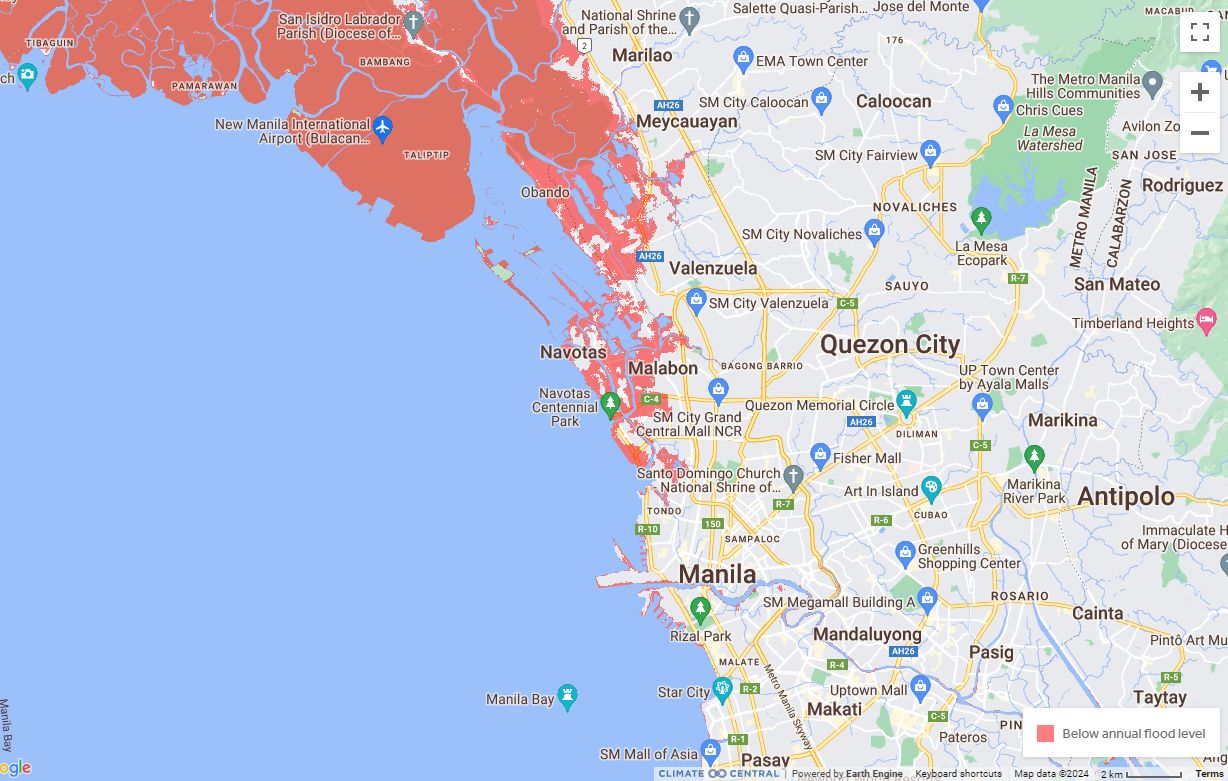Journalists “reporting” on the devastation wrought by the passing of Typhoon Gaemi (along with southwest monsoon rains) may as well be copy-and-paste jobs. After all, there is a trove of past news reports on typhoons (and even minor weather disturbances) hitting the Philippines and causing disproportionate devastation. Indeed, what stands out is the embarrassing sameness of what transpires — floods, standstill traffic, and lots of virtue signalling from private relief and disaster response initiatives.
Thing is, powerful typhoons are nothing new to Filipinos — which makes it doubly baffling how utterly unprepared they are year in and year out. As if that weren’t enough, as climate change gallops on unabated, it’s bee known for the last several years just how vulnerable the Philippines is to its ravages. Indeed, according to an Amnesty International report published way back in 2019, the Philippines is the country most at risk from this planetary crisis.
A study produced by Climate Central shows that around 150 million people currently live in areas set to be submerged by 2050, and about 70% of these people at risk are South East Asia, including the Philippines.
As the Philippines are a collection of islands, there are a lot of people living on the coast. Add to this the low elevation of much of the land and you have a recipe for disaster.
Indeed, the report referred to a map of Metro Manila generated by Climate Central showing areas around the Metro Manila that will likely be underwater in increasing frequency over the foreseeable future. Quite disturbing to note that included in the flooding projections out to 2030 is pretty much all of the area where the new Manila International Airport is currently under construction in Bulacan!
| SUPPORT INDEPENDENT SOCIAL COMMENTARY! Subscribe to our Substack community GRP Insider to receive by email our in-depth free weekly newsletter. Subscribe to our Substack newsletter, GRP Insider! Learn more |

It is clear that very little has changed in the way of flood control or disaster response capability since the report was published in 2019. For that matter, even following the more devastating flood in the wake of Typhoon Ondoy in 2009, no lessons have been learned.
benign0 is the Webmaster of GetRealPhilippines.com.
There is no climate crisis. It’s a scam. You are a fool to believe that land will disappear.
Always amusing to witness “truth-tellers” lecture on Climate Change. It is a hoax; the climate has never quit changing no matter what Chicken Little keeps squawking about what is coming any day now.
You begin your argument with explaining inevitability of typhoon damage, and like a good little propagandist quickly transition to warning that we can expect worse in the future because of contrived climate change…
You are only scaring the children.
It’s a sad thing how sometimes the game of politics tends to destroy an important government initiative that could have been crucial or essential to something that could have help solved or lessen the impact of a perennial weather problem, at least for Metro Manila.
The Paranaque Spillway project was up for implementation in the late 70s but was was cancelled due to budget issues.
No succeeding administration from the time of Cory Aquino in 1986 up to the time of Rodrigo Duterte in 2022 (that’s 36 years!) decided to purse it. It suffered the same fate of the Bataan Nuclear Power Plant simply because it has the Marcos brand.
The Parañaque Spillway (the spillway that would complete it from Laguna de Bay to Manila Bay) was part of the Metro Manila flood control master plan, as designed during the Marcos days.
Tardic opposition people loyal to the Duterte brand (aka the Dutertards) are now putting the blame to a sitting president of two years, mockingly trying, especially after his remark during the SONA of the government having completed 5,500 flood control projects.
(To prove a point, these people are quite jubilant when two days after came Typhoon Gaemi… and yes, so with lots of virtue signalling from private relief and disaster response initiatives.)
There are now talks to revive and pursue the project, together with the proposed Marikina Dam, but that will probably take time more than the whole term of PBBM to finish the project… now with the ever present complex urban landscape problems of right of way.
Flood control in Metro Manila, like the rice, the staple food of the country is a political issue.
Here’s something from The Politics of Flood Control and the Making of Metro Manila:
“The emergence of Metro Manila as a political unit is inextricably tied to its history as a flood-prone metropolis. A comparison of flood-control efforts in the 1970s with those that preceded it in 1909 and 1952 demonstrates that flood control in Metro Manila has been a deeply political issue. Opposition from local governments derailed plans, which gained traction only under Ferdinand Marcos, who starting in 1972 initiated large-scale projects and neutered local autonomy by creating the Metro Manila Commission. Marcos’s flood-control program followed his regime’s technocratic, high-modernist approach to disaster mitigation and centralized metropolitan governance, with slum dwellers living along the waterways bearing the brunt of his undemocratic disaster governance.”
BTW, it’s interesting to note also how even with the technological advanced capabilities of the richer countries such as China and Taiwan proved to be of no match to the relentless power of mother nature which make them also suspects to that embarrassing sameness of what transpires.
In China:
Mighty China can create artificial islands in the middle of the sea but still she can’t prevent flood waters from entering her mainland.
Unfortunately we have reached a point of no return long ago with the immense population density of the NCR, and adding all the people from Rizal + Cavite + Bulacan commuting there everyday. It’s yet another tragic consequence of this country’s ruling class having no foresight and only concerned about rent-seeking.
We would have to endure what we put up with.